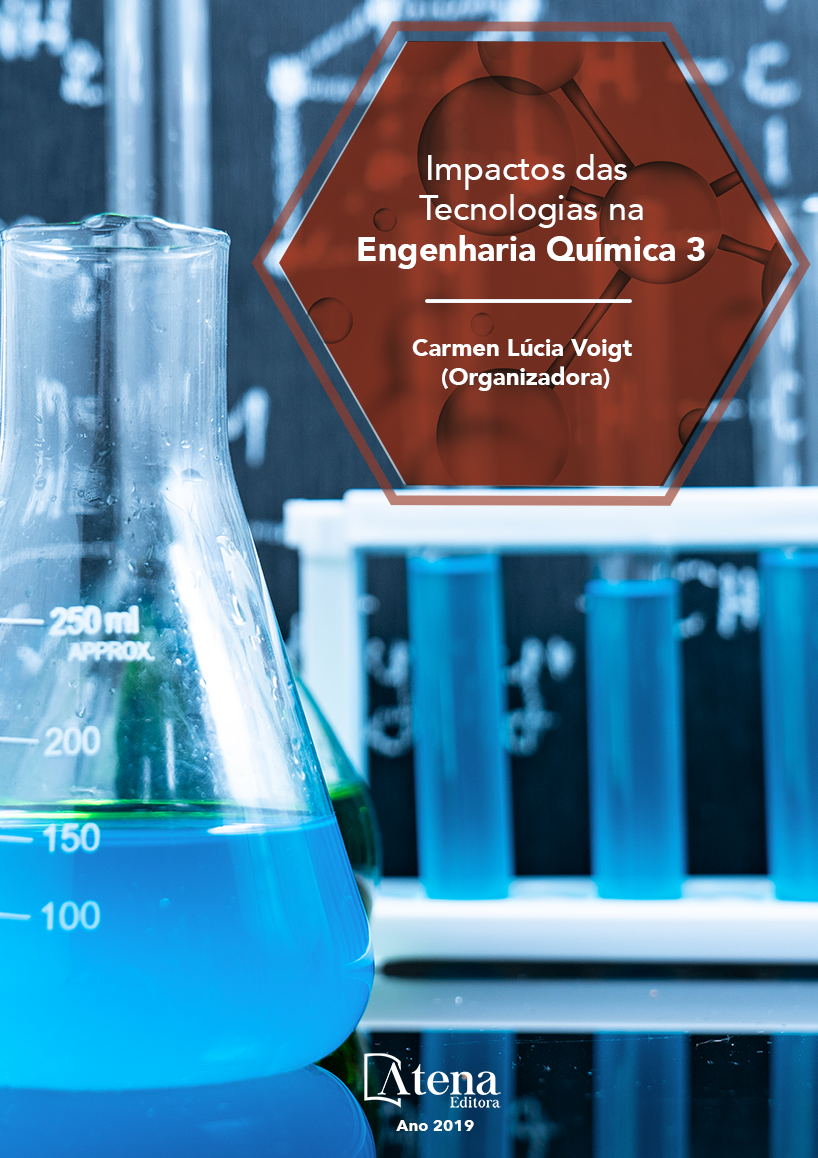
DESENVOLVIMENTO DE PROCESSO QUÍMICO DE CAPTURA DE CO2 UTILIZANDO A TECNOLOGIA HIGEE NA INTENSIFICAÇÃO DE PROCESSOS PRODUTIVOS
As colunas de recheio rotativo,
denominadas Higee, permitem o aumento
da capacidade e eficiência de um processo,
comparado a uma coluna convencional.
Neste contexto, a principal proposta deste
trabalho foi desenvolver uma coluna rotativa
com leito estruturado para a absorção de
gás carbônico por uma solução de NaOH 1
M, utilizando a tecnologia Higee. A avaliação
do novo sistema desenvolvido foi realizada
através da eficiência de captura de CO2, da
área interfacial efetiva (ae) e do coeficiente
volumétrico de transferência de massa em
fase gasosa (kGA). Também foram avaliados
a influência dos parâmetros operacionais de
velocidade de rotação e das vazões de gás e
líquido no processo de absorção. A quantidade
de CO2 absorvido na solução de NaOH foi
determinada a partir da titulação com HNO3 1
M. As variáveis investigadas foram a velocidade
de rotação (300; 1050 e 1800 rpm), vazão de
CO2 (4; 6 e 8 L min-1) e vazão de NaOH (0,5;
0,75 e 1,0 L min-1). O aumento da velocidade
de rotação levou a um aumento da eficiência,
ae, e kGA, e, consequentemente, o contato entre
as fases. Foi verificada a proporção direta entre
a vazão de gás e os valores de ae e kGA. As
maiores eficiências foram obtidas nas menores
vazões de CO2 e NaOH, 4 L min-1 e 0,5 L min-
1 respectivamente, e na maior velocidade de
rotação, 1800 rpm.
DESENVOLVIMENTO DE PROCESSO QUÍMICO DE CAPTURA DE CO2 UTILIZANDO A TECNOLOGIA HIGEE NA INTENSIFICAÇÃO DE PROCESSOS PRODUTIVOS
-
DOI: 10.22533/at.ed.31919010426
-
Palavras-chave: Higee; área interfacial efetiva; coeficiente volumétrico de transferência de massa em fase gasosa; velocidade de rotação.
-
Keywords: Higee; effective interfacial area; volumetric gas-phase mass transfer coefficient; rotation speed.
-
Abstract:
Rotating Packed Bed, called Higee, allow the increase of the capacity
and efficiency of a process, compared to a conventional column. In this context, the
main proposal of this work was to develop a rotating column with structured bed for
the absorption of carbon dioxide by 1 M NaOH solution, using Higee technology. The
evaluation of the new system was performed through the CO2 capture efficiency, the
effective interfacial area (ae) and the volumetric gas-phase mass transfer coefficient
(kGA). The influence of the operating parameters of rotational velocity and gas and
liquid flow rates on the absorption process were also evaluated. The amount of CO2
absorbed in the NaOH solution was determined from titration with 1 M HNO3. The
variables investigated were the rotational speed (300, 1050 and 1800 rpm), CO2 flow
rate (4, 6 and 8 L min-1) and NaOH flow rate (0.5, 0.75 and 1.0 L min-1). Increasing the
speed of rotation led to an increase of the efficiency, ae, and kGA, and, consequently,
the contact between the phases. The direct proportion between the gas flow rate and
the ae and kGA values was verified. The highest efficiencies were obtained at the lowest
CO2 and NaOH flow rates, 4 L min-1 and 0.5 L min-1 respectively, and at the highest
rotation speed, 1800 rpm.
-
Número de páginas: 15
- José Renato Guimarães
- Brenda Sedlmaier Costa Coelho
- Camila Ceravolo de Carvalho
- Francine Silveira Vieira
- Luiza Moreira Santos
- Jorge David Alguiar Bellido
- Kaíque Souza Gonçalves Cordeiro Oliveira


